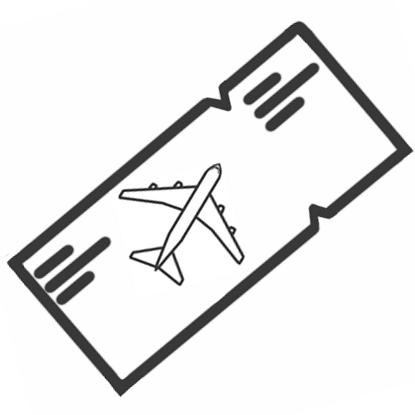Aviation
Outlook
Overview
The Covid-19 pandemic has had a massive effect on air transportation and each sector of the aviation industry, with the US Travel Association calling this time the "Great Travel Depression”. Together, passenger fears of contracting the virus and the industry’s susceptibility to economic recessions have caused a massive decline in airline operations, with no sign of fast recovery. As described in the “Setting the Stage” tab, both 9/11 and the Great Recession had large lasting impacts on the aviation industry. However, Covid-19 has had a much larger effect on aviation than either of those crises, so we can anticipate equivalently large (or even larger) changes to the industry in coming months/years. Each sector of aviation was impacted by the pandemic differently, and will experience unique changes in coming years. A variety of factors will affect the recovery of air transportation, including economic stability, the state of the virus, a potential vaccine, forced quarantines and travel bans, and more. While these social factors are almost impossible to predict, we supply an analysis of the various factors that will play into sector recovery.

Passenger Air Travel
Passenger travel numbers have plummeted significantly since the pandemic began. Travelers have expressed concerns over Covid-19 spikes and inadequate safety measures, resulting in numerous flight cancellations and significantly reduced bookings. Additionally, newly enforced international travel policies and lockdowns have prevented passengers from traveling to certain countries, thus suspending long haul flights. The scarce demand for air travel has resulted in the bankruptcy of various regional airlines in the US, expanding the role of legacy carriers in upholding the industry as it struggles to endure the devastating impacts of the coronavirus. Overall, the notion of air travel being a reliable source of transportation has completely shifted. The industry is now surrounded with a high degree of uncertainty and mistrust as the pandemic raises worries for the life threatening health risks anchored within traditional aviation.
Looking ahead, passenger travel demand will eventually return, though with major changes. Leisure travel will most likely recover faster than business travel, however both will remain at significantly low levels as long as the pandemic continues to be a threat. Throughout the year, leisure demand will pick up very gradually due to the reduced disposable income among consumers and weakened traveler sentiment. Business travel will return to some degree in the next year, though large conferences and exhibitions see no sign of returning in the near future.
In the long term, leisure travel will pick back up while business travel will return to a lesser extent as the implementation of virtual platforms for workplace interactions becomes a bigger reality. The pandemic has forced businesses to invest in virtual resources, and regular use of these systems is anticipated even after the pandemic ends. As collaborative virtual technology improves over the next few years, the demand for in person meetings will decrease, lowering long term passenger travel demand.

Air Freight
After experiencing large declines in passenger travel demand, the main source of income for most airlines, many US airlines have been forced to concentrate efforts towards air freight in order to adapt to the impacts of the pandemic. Desperate to generate revenue, airlines have resorted to using passenger aircraft to transport freight, removing seats to maximize capacity. However, only a fraction of airlines’ typical revenue has been salvaged from these efforts. Nevertheless, with increased freight demand seen from growing sectors such as e-commerce, the industry has witnessed the potential for freight operations to become a more lucrative business. People who have traditionally relied on in-person shopping have been forced to switch to online shopping as businesses have had to close down stores. This immense growth in e-commerce has allowed air freight to sustain itself throughout Covid-19.
The pandemic has forced airlines to adapt and make necessary changes such as with the reconfiguration of passenger aircraft to carry larger freight loads. While this tedious process remains temporary, long term innovation will be seen with manufacturers designing passenger aircraft to have greater freight compatibility. E-commerce will see short-term growth and long-term growth as consumers continue to rely on online shopping throughout the pandemic and eventually become accustomed to the online shopping experience, replacing traditional in-person shopping habits.
The aviation industry will adapt to these changes and support this growth by expanding express routes to better navigate geographical constraints, making the trips more efficient. Additionally, the transition towards increased automation within air freight transport will be emphasized to also further efficiency. While the road to recovery will be difficult, as air freight is significantly dependent on the economy, the growing trend in e-commerce assisted by systemic changes and innovations will improve freight operations, setting the course for a brighter future.

Manufacturing
Prior to 2020, aviation manufacturing was in a state of decline. Manufacturers and part suppliers saw a decrease in demand throughout 2019, with Boeing experiencing significant revenue losses after the grounding of the 737 MAX jet. Projections for 2020 suggested that overall manufacturing demand would increase, but the sector was greatly impacted by the Covid-19 pandemic. The pandemic greatly reduced production rates, forcing many manufacturing companies to cease operations temporarily, driving down revenue due to airlines cancelling aircraft orders.
Once the turmoil from the pandemic subsides, the market for commercial aircraft will look different. Aircraft production demand will be significantly lower, but it will steadily recover as passenger air travel recovers. Airlines will prefer small-body jets over costly wide-body ones to conserve money and reduce risk of infection, as wide body jets carry hundreds of passengers in close quarters, and have large maintenance costs. It may also be beneficial to produce reconfigurable aircraft that can carry both passengers and cargo, given the increase in e-commerce and recent use of passenger jets to transport cargo. In the coming years, aircraft manufacturing can be expected to occur beyond the traditional industry leaders. Non-traditional manufacturers will broaden the scope of aircraft manufacturing, introducing new technologies to the field for safer, more efficient flights.

Urban Air Mobility
Urban air mobility was a growing industry prior to 2020, generally unproven for its capabilities, but with lots of predicted growth. Many groups were working on developing UAM technologies, both traditional aerospace leaders and nontraditional contributors like startups and tech companies. Since the pandemic has begun, some UAM development has been put on pause while other projects have progressed.
UAM has emerged as a potentially preferable means of transportation during pandemics due to the reduced human contact the system offers. Current efforts in UAM development strive to create autonomous navigation and personalized mobility, which allow for reduced human contact, reducing the spread of infection. Since the pandemic began, UAM has been used to deliver essential goods and even medical staff. The quick acceptance of UAM and its automated services, despite concerns over safety and autonomy mere months before, has created an optimistic future for the widespread implementation of UAM. There will be an emergence of both large and small UAM in coming years, but continued efforts are necessary to ensure that UAM technology is capable and appropriately integrated into society. There is little experience of safe UAM operations, and significant progress is needed before the public can fully accept it as a safe, comfortable, and affordable method of transportation.

National Airspace System
The NAS has been significantly impacted by Covid-19, as the reduction of passenger demand has resulted in a drastic decrease in overall aviation operations. Control towers across the country have experienced a reduction of their hours due to the minimal demand, and others have been forced to close as air traffic controllers have tested positive for the virus. Previous concerns like delays and operation efficiency are not being prioritized as the sector waits for the return of passenger demand.
Though current aviation operations are greatly reduced from that of 2019, and significantly decreased operations are projected through 2020, the demand for aviation will return with time. In the long term, the NAS is expected to see some major changes. As new aircraft systems are developed in the coming years, commercial space flight, UAS, and other NextGen additions to the National Airspace System must be safely integrated into the NAS. Automation will have a huge role in all future projects and programs, increasing the efficiency and safety of the system, but also forcing a change in employment in the sector. As modernized and automated systems are implemented, the role of air traffic controllers and even pilots will become heavily focused towards understanding and controlling the automated platform, and over time, less employees will be needed as modernized platforms reduce the human workload.

Environment
Covid-19 has greatly reduced airline operations, therefore reducing the industry's environmental emissions for the year. However, the pandemic has also shifted the focus of the industry away from becoming more sustainable. Environmental standards have been temporarily loosened across the globe under the rationale of the Covid-19 pandemic, and this year’s airline emissions are being disregarded by CORSIA (the UN’s carbon offset program). It is clear that the aviation industry is focusing on its recovery instead of prioritizing sustainability.
As airlines across the globe negotiate billions of dollars in bailouts to cover the extreme losses in revenue due to Covid-19, airline bailouts present an interesting potential environmental impact on aviation. Various government leaders and environmental activists claim that government bailouts must force a green transition of the aviation industry, and that the industry cannot return to its state pre-2020 where it had massive emissions, tax exemptions, and very few pollution laws. However, very few bailout agreements currently include these "green strings", with US airlines on track to get billions in bailouts without any environmental conditions.
It is unclear how much of an impact Covid-19 will have on the future environmental progress of the aviation industry. However, it is clear that the future of aviation is sustainable aviation. Climate change has been slowly occurring for decades, and the grave consequences are becoming more imminent. Meanwhile, despite progress in aircraft technologies, it is clear that advancing conventional technologies will have limited potential for a future sustainable improvement. Instead, the industry must direct its focus towards the development of revolutionary aircraft, while continuing efforts to improve the efficiency of conventional aircrafts, offset their emissions through programs like CORSIA, and any other means of reducing the environmental impact of aviation.
